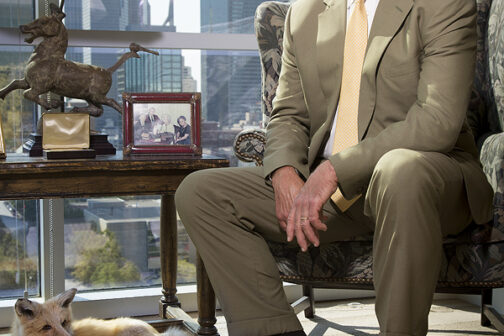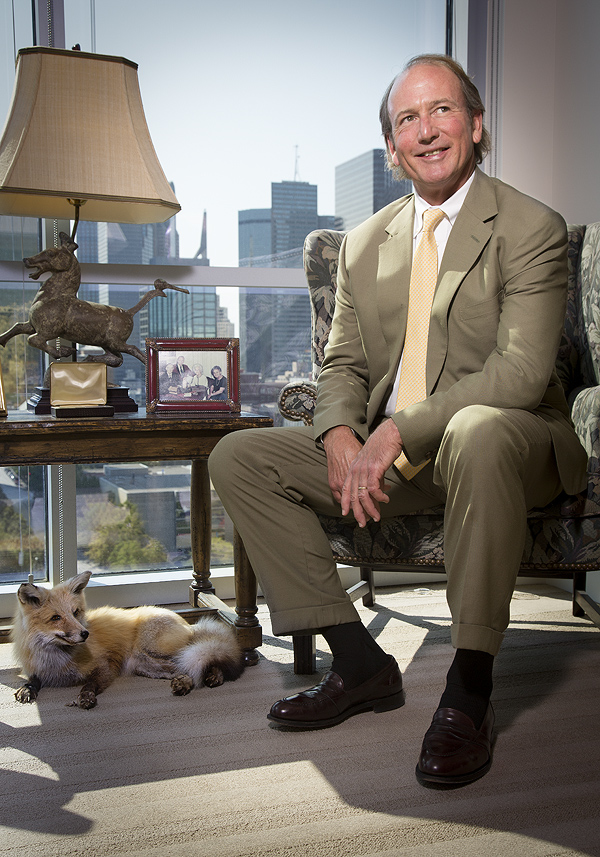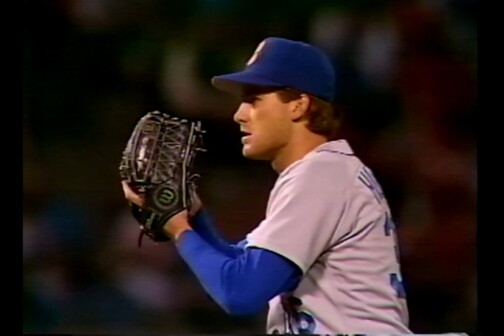
Leo F. Corrigan III
The owner of Corrigan Properties Inc. continues the family tradition of real estate development in Dallas—and giving back to the community. He has five goals he hopes Klyde Warren Park will achieve.When it comes to commercial property, Leo F. Corrigan III knows the importance of patience, and finding the highest and best use for land. Those values were passed on to him by his late father and grandfather, real estate icons in Dallas.
It was his grandfather who first purchased land that now fronts Klyde Warren Park between Harwood and Olive. In the 1980s, the family acquired the remainder of the block that extends north to McKinney Avenue. But it wasn’t until 2008 that Corrigan Properties Inc. joined forces with Lincoln Property Co. to develop 2000 McKinney on the site. The 14-story tower is also known as the Texas Capital Bank building.
Another Corrigan family value: giving back to the community. Leo F. Corrigan Sr., for example, was the first president of the former Dallas Central Business District Association. So when Leo III was approached in the early 2000s about supporting an effort to build a deck park over Woodall Rodgers Freeway, he quickly signed on. He has served as a longtime member of the park foundation’s board, and his company made a substantial financial gift to the project.
Corrigan says not everyone in Dallas shared the vision. “There were quite a few naysayers along the way, but they didn’t have the benefit of what the board knew and what we were being told by the experts we had brought in,” he says. “We didn’t pay much attention to that; we just focused on executing our mission.”
Corrigan says he has five goals for Klyde Warren Park:
– That the community embraces the park as if it was their own.
– That it creates a successful common area of activity that benefits all of the surrounding cultural institutions.
– That the park, through its venues and programs, supports itself financially.
– That it provides a place of relaxation, reflection, and interaction, a community place where people can go to wind down.
– That it is a catalyst for improving both Uptown and downtown Dallas.
“It has been a very complicated project that required the cooperation of many, many constituents,” Corrigan says. “But in the end, the park should be a tremendous asset for residents, visitors, the City of Dallas, and the entire region.”
—Christine Perez

Angela Hunt
Dallas City Council member Angela Hunt has long championed the deck park because “more green space means more human space.”
And the veteran advocate for a more user-friendly city isn’t through yet.
Since becoming a Dallas City Council member in 2005, Angela Hunt has been on a mission. As the representative of District 14, which includes Klyde Warren Park, she has worked to make Dallas more inhabitable and user-friendly. A concerted effort has been to unite downtown, the Arts District, and Uptown by means of the park over the Woodall Rodgers Freeway.
The freeway has been a chasm in downtown, Hunt says. She calls the park “the creation of green space in the middle of cement over this moat of freeway.”
Although many Dallasites supported the park, Hunt still had to convince naysayers that it would be a good use of taxpayer dollars via the 2006 bond election. The tipping point for the skeptics, she says, was learning that the park would be maintained through private funding.
Once the bond allocation was approved, Hunt set out to ease concerns about what role the park would play. “I think at the beginning, there was a bit of tension between the Arts District and the park,” she says. “It was a sense of uncertainty, of not knowing what it would mean for the district.”
The park has already helped spark at least two commercial projects nearby: Museum Tower and the mixed-use 2000 McKinney complex. With original designs calling for a parking garage adjacent to the park, Hunt persuaded the developers of 2000 McKinney to alter the layout to be more compatible with the Arts District. The building’s residential condos and a restaurant—rather than the garage—will now overlook the green space.
Even after the opening of the park, much remains to be done, Hunt says. She will continue lobbying for Olive Street to be closed through the park, in the same way she fought (successfully) for the closure of Harwood Street.
“I felt strongly that for this park to not be a glorified median, we would have to close Harwood and Olive Streets,” she says. It “allows people to enjoy the park without having to cross the street.
“Once people see that it’s a successful project, there will be similar opportunities,” Hunt adds. “It’ll be a great success in developing parks in the future. That’s the best thing about this park: More green space means more human space.”
—Shashana Pearson-Hormillosa





